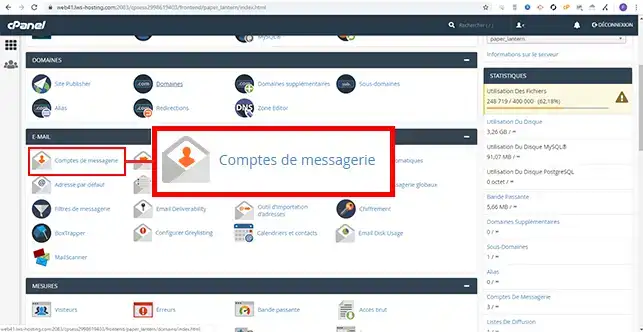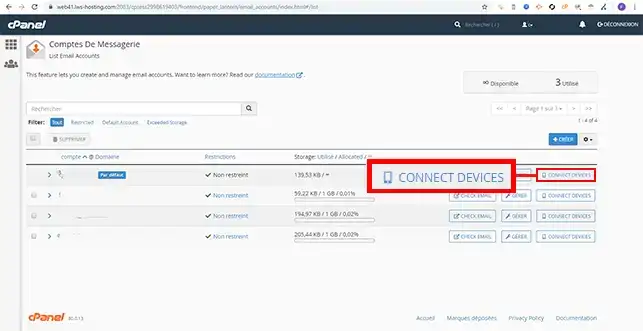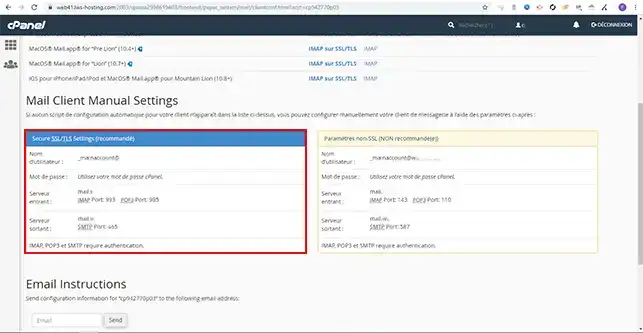Rate this article :
This article was useful to you ?
Yes
No
Vous avez noté 0 étoile(s)
Sommaire
Procédure
As you will no doubt have noticed, when configuring your email software such as Outlook, you are often asked to choose between an encrypted connection (SSL/TLS) and a non-encrypted connection. Both configurations work, but there is a difference between the two types of connection.
If you want to configure your software using an unencrypted connection, the configuration will use the following ports:
This type of connection means that emails are sent in clear text from one server to another. This means that they can be intercepted by malicious parties. Consequently, if you use this type of configuration, we advise you not to provide any personal information such as passwords or identifiers.
However, to connect to your email address, you will always need to identify yourself by entering the email address and the password attached to the email.
The encrypted connection is used with the following information:
This connection indicates that the information in transit will be encrypted. As a result, even if it can be intercepted by a third party, the data will be unreadable and unusable.
Wherever possible, it is preferable to use an encrypted connection (SSL/TLS).
1. You can find the encrypted connection information (SSL/TLS) by going to your cPanel interface. Click on"Email account" in the"Emails" section.

2. Click on the"Connect Devices" button behind the email address you wish to configure.

3. Here you will find the configuration settings for your email address. The default SMTP, IMAP or POP server on cPanel is mail.domaine.com (replace domaine.com with your domain name).

You can now tell the difference between an unencrypted connection and an encrypted connection (SSL/TLS). You can also configure your email software on your cPanel shared hosting. As mentioned above, it is preferable to use an encrypted connection to avoid any interception of certain data.
Don't hesitate to share your questions and comments.
Rate this article :
This article was useful to you ?
Yes
No
0mn reading
Configuring your email addresses in email software
1mn reading
E-mail and webmail configuration parameters on cPanel
1mn reading
6mn reading